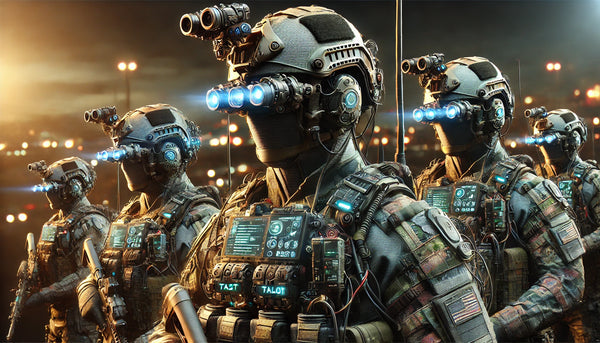How Tactical Drones Are Changing the Battlefield
February 21, 2025

The evolution of warfare has always been driven by technological advancements, and in 2025, tactical drones are at the forefront of this transformation. These unmanned aerial systems (UAS) are revolutionizing how military forces engage in combat, gather intelligence, and maintain situational awareness. From surveillance missions to direct strike capabilities, tactical drones are redefining modern battle strategies.
The Role of Tactical Drones in Modern Warfare
Tactical drones are designed to provide real-time intelligence, reconnaissance, and targeted attacks with minimal risk to human personnel. Their ability to operate in hostile environments, gather crucial data, and deliver precision strikes has made them indispensable to military forces worldwide.
1. Enhanced Reconnaissance and Surveillance
One of the most significant advantages of tactical drones is their ability to conduct reconnaissance missions in real-time. Equipped with high-definition cameras, thermal imaging, and AI-driven analytics, these drones offer unparalleled situational awareness, helping commanders make informed decisions on the battlefield.

MQ-9 Reaper
2. Precision Airstrikes with Minimal Collateral Damage
Tactical drones such as the MQ-9 Reaper and Bayraktar TB2 have proven their effectiveness in delivering precision strikes while reducing collateral damage. These drones can identify and neutralize high-value targets with surgical accuracy, minimizing the risk to civilians and allied forces.

Bayraktar TB2
3. Electronic Warfare and Jamming Capabilities
Modern tactical drones are not limited to surveillance and attack roles. Many are now equipped with electronic warfare capabilities, including signal jamming and cyber operations, disrupting enemy communications and radar systems.

RAF StormShroud electronic warfare drone
4. Logistics and Supply Chain Support
Drones are also being used for resupply missions, delivering medical supplies, ammunition, and other critical resources to troops in remote or hostile environments. This capability reduces the need for risky manned resupply missions.
The Impact of AI and Autonomous Operations
Artificial Intelligence (AI) is playing a crucial role in the advancement of tactical drones. AI-driven drones can autonomously navigate complex terrain, identify threats, and execute missions with minimal human intervention. Machine learning algorithms allow drones to adapt to dynamic battlefield conditions, increasing their effectiveness and survivability.
Challenges and Ethical Considerations
While tactical drones offer numerous advantages, their use also raises ethical and operational challenges:
-
Autonomous Decision-Making: The increasing autonomy of drones raises concerns about accountability and the potential for unintended engagements.
-
Counter-Drone Technologies: As drones become more prevalent, adversaries are developing countermeasures, including anti-drone weapons and electronic warfare systems.
-
Legal and Humanitarian Issues: The use of drones in warfare continues to spark debates regarding international law and the rules of engagement.
Future of Tactical Drones
The future of tactical drones is set to be even more transformative. Advancements in swarm technology, AI-driven decision-making, and drone-manned teaming will further enhance battlefield effectiveness. Military forces are investing heavily in next-generation drones capable of performing complex missions autonomously, paving the way for a new era of warfare.
Tactical drones are reshaping the battlefield by providing superior intelligence, precision strikes, and enhanced operational capabilities. As technology continues to advance, their role in modern warfare will only expand. However, as their use grows, so does the need for ethical considerations and strategic countermeasures.

Read. Learn. Gear Up.
Stay sharp with in-depth article, survival insights, and the latest gear trends